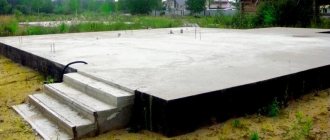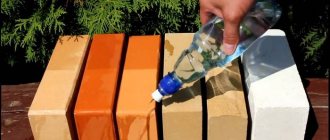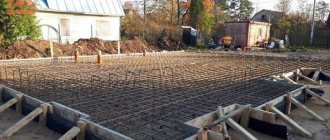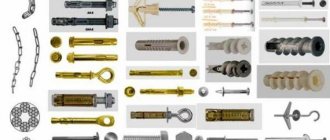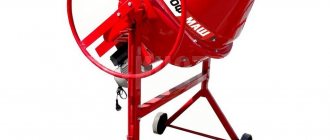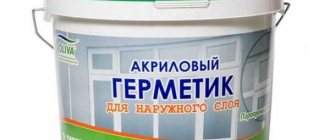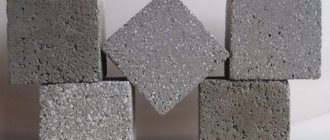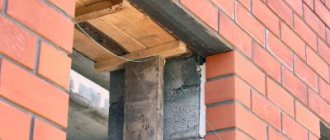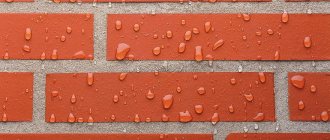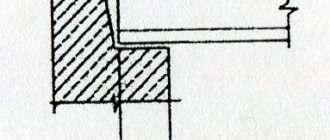The area where the pipeline is laid through the walls and ceiling becomes the main point of deformation stress. In such places, the pipe is exposed to the chemical environment and mechanical loads. Due to such circumstances, in the SNIP building codes, pipelines are equipped with additional structural parts, which are called sleeves. What they are and why they need to be installed will be discussed in detail below.
The device for passing the pipe through the wall is an important element, and it performs the following functions:
- mechanical;
- protective;
- waterproofing;
- fire protection;
- sanitary.
In addition, this element can increase the service life of the highway and facilitate the replacement of structures.
The sleeve is arranged as follows:
- a case for which a steel structure is used;
- packings made of soft, fire-resistant material.
The sleeve for the passage of the pipe is made in the form of tubular products. And the free space between the structures is filled with fire-resistant material. It must not be rigid in structure. This is necessary so that when the pipe heats up, it will begin to change its dimensions, and if there is hard material, it may become damaged.
The diagrams provided above show that the highway can pass through any building in two planes. Thus, the ceilings between floors are crossed by vertical networks (risers), and the walls are crossed by wiring running horizontally. The provided figure shows an example of the arrangement of a part, first in the ceiling, and then in the wall.
In both the first and second cases, the cover of the part must be firmly secured. The tubular product must move freely through it. The diameter of the cover in one and in the second case must be 10 mm larger than the diameter of the pipeline. And the cover itself is securely fastened in the passage hole.
Installation and caulking of the main line cartridge is carried out by calculating the height that the screed has. The length of the sleeve should be 20 mm greater than the thickness of the ceiling. If this point is not observed, then there is a risk of water entering the floors located below.
Sleeves for pipeline passage: structure, types, equipment
If you have a private house or cottage, then this issue will become one of the decisive ones, because any building needs a water supply system, a gas pipeline and a sewerage system. In the twenty-first century, there are a huge number of opportunities to protect housing from environmental and atmospheric influences. The safest and lowest-cost method is to install sleeves.
In most cases, pipeline sleeves must be used
Several theses follow from this.
- Do I need to use sleeves or other materials to pass pipes through walls?
- Which cases are better?
- Which material is the most resistant?
- What is the internal volume of penetration in the floors?
- How to seal?
- At what distance from the partitions should it be located?
- What installation difficulties can you encounter?
- Is it possible to lay heating through walls using a sleeve?
Read the article and you will find the answers you are interested in.
Installing sleeves is the most cost-effective and safest way
Structure of sleeves in walls and ceilings
The first requirement when integrating pipelines, gas pipelines and sewerage into building structures is the continuity of the insulating layer. This requirement is due to the fact that in the presence of cracks, holes and other defects, air and dust begin to enter the pipes, as a result of which they are deformed and destroyed.
Naturally, after building a residential building, you do not want to encounter a similar problem, the solution of which will not only take a huge amount of time, but also waste of materials, up to partial or complete re-filling of the foundation (floors).
To prevent such moments, there are sleeves for pipelines, sewers, and cables.
The issue with sleeves needs to be resolved during construction, then it will be problematic
Types of pipeline sleeves (material)
- Metal sleeve
- Fireproof (clay, ceramic) sleeve
- Polymer sleeve
Steel sleeve is the most reliable option
- Steel is the most durable and expensive material that is suitable for almost any floor.
They are used on large-scale construction sites, as they can withstand pressures of up to 120 tons per 1 square meter. They are also very popular in the construction of reinforced concrete structures - they can be concreted not only at the construction site, but also in the production workshop. The edges of such a part must be sanded so as not to damage the polypropylene pipes inside. - Fireproof - distinguish between clay and ceramic. Used as an insulating material for chimneys. The main disadvantage is fragility, which means be careful when installing (you can not only break your purchase, but also get a cut injury).
- Polymer - used in interior floors for pipelines and cables. The main distinguishing feature of the material remains wear resistance and cold resistance.
Each material has its own characteristics and disadvantages
Equipment
Before choosing a material for construction, carefully check the pros and cons, taking into account the surface surrounding the sleeve, the size of the pipe itself, safety and previously integrated systems. The most important advantage is the acceleration of repair work. In addition, thanks to the arrangement of protection, you increase the wear resistance of the line and simplify their possible future replacement.
Pipeline diagram with sleeve
The most vulnerable parts are their gaps. When assembling, it is recommended to place the joints so that they do not lie in the same plane, and the longitudinal seams are shifted relative to each other by 1-1.5 centimeters.
Where pipes pass through building structures, it is necessary to insert sleeves from pipes of larger diameter with a soft gasket. The cartridges are inserted before placing the material and covered with concrete mortar. In addition, the specifics of the passage of pipes through the wall are directly related to the type of communications being laid.
Each method is determined by individual nuances, therefore, in order to provide individual protection to the internal life, we will consider the designs “in cross-section”.
When installing sleeves, many nuances are taken into account
- Plumbing In the case where the installation is made of steel parts, a protective coating is applied to them at the junctions with building elements to prevent the ingress of debris. If the pipeline is intended for cold water supply, a cover will be required.
It will help avoid moisture condensation on the surface, thereby making the channel last decades longer. If plastic profiles are used for laying, then you should first look at the instructions for it.If there are seals in the parts of the pipeline entrance to the room with the possibility of groundwater runoff, then waterproofing couplings are used in them and covered with concrete mortar so that liquid does not leak into the lower tiers of the building.
If steel parts are installed, they are treated with a protective layer at the end
- Drain pipes The specific design of cast iron caps lies in their difference from other materials that require reinforcement and sound insulation when crossing pipelines.
To do this, you need a steel cartridge with a gap of 20-25mm. must exceed the pipe. The specificity of the design of cast iron caps lies in their difference from other materials - Steam heating In a steam heating system for internal rooms, sleeves play a primary role.
If they are not installed, temperature changes will lead to deformation of the main line and the formation of cracks in the ceilings. Just like for installing hot water plumbing, you should rely on polypropylene caps. The fastening mechanism is distinctive; during production it is characterized by high heat resistance and maintains a high and constant temperature from the inside. Based on this, do not rush into purchasing, but properly study the offers of manufacturers who not only meet your criteria, but also meet the criteria of SNiP. This will save your strength and resources. Installation of sleeves for steam heating is a mandatory procedure - Size of the inner diameter of the sleeve This point becomes decisive when installing equipment in partitions, therefore it must be approached with the utmost care and pickiness.
If the outer and inner diameters of the sleeve for the hot heating pipeline do not match, the most unexpected surprises may appear. The structure must be chosen so that passage through the floors is free. The parts have similar technical gasket features, but at the same time have different endurance. When the pipe is laid through the ceilings, it is necessary to connect the sleeves, the outer diameter of which should be 10-15 mm wider than the pipe, with a gap of 2-3 cm. In this case, the case itself must be tightly secured in the passage hole. The gaps between them are sealed with glass wool. For metal-plastic pipes, when passing through building structures, try to install fasteners made of plastic pipes with a slightly larger outer diameter. As a result, in order not to make a mistake with the cost and reliability of the work done, we recommend that you turn to professionals - they will save both nerves and time. The issue of sleeve size must be approached with maximum care and pickiness. - Sealing
To protect the pump when crossing pipelines and partitions, it is recommended to seal them tightly so that even small gaps do not remain. The inner diameter of the sleeve should be 30mm wider than the thickness of the pipe. We insert washers with angular threads with a longitudinal section of 3-4 mm onto the connections.
Pipe sealing should be maximum
Passage of a flue through the wall of a building
The most successful way to exit the gas duct in the partition is from the pediment side. But if this cannot be done and the chimney comes out from the side of the slope, then we weld the stand and attach the structure to it with sliding fasteners. The result is an intelligent and long-lived system.
Diagram of the chimney exit through the wall and one of the implementation options
: Water pipe sleeve connection
Source: https://couo.ru/kvartira-i-zagorodnyj-dom/stroitelstvo-i-remont/vybiraem-gilzu-dlya-proxoda-truboprovoda-cherez-stenu.html
Types of lining
Sandwich pipe lining
The principle of behavior of lined liners and their placement in the channel is the same, but the liners differ in material, so there are certain nuances for each type.
Specialized stores offer inserts:
- made of polymers;
- of steel;
- from corrugated pipe;
- polymer sleeve;
- made of stainless steel.
Polymer sleeves
A plastic pipe is installed inside the operated chimney. PVC products are reinforced with fiberglass fabric and, when heated, acquire plasticity. As a result of this property, irregularities and spaces on the clinker surface are filled. After hardening, the internal area becomes smooth, and the wall has a thickness of 2 cm.
The downside of the application is the temperature limitation. Lining a chimney made of brick with plastic is done with exhaust flows up to +250°C, so they are installed to work with low-power units.
Application of steel elements
Corrugated pipe lining
A structure made of a rolled pipe is placed in the straight section of the chimney, or rectangular, square, oval and round shapes are made with your own hands. Sheets are taken with a thickness of 0.5 to 1.5 mm. In channels made of steel materials, it is possible to provide the required modules for cleaning, inspection, and containers for accumulating condensate in accordance with the standards.
Steel products are used for fireplaces using various types of fuel. The material resists acids and is not subject to plaque deposits. The disadvantage is that only straight sections can be lined with this method; winding pipelines cannot be equipped.
Using corrugated pipe
Manufactured using various types of stainless steel, the pipe shells are made of two layers. The positive thing is that flexible liners are used for complex channels with turns. The products do not require connecting elements. Double-layer inserts significantly reduce the diameter of the air duct; this must be remembered when choosing.
Polymer sleeve
Polymer sleeve for chimney lining
The sleeve is made of copolymer resin and reinforced with fiberglass. The insert is used to combat condensate drops; it is used to treat low-temperature chimneys and those coming from powerful boilers.
Types of polymer products:
- Fitfire is a liner containing two layers, the maximum element has a length of 60 m. After installation, the chimney duct has a diameter of 80 - 500 mm. The manufacturer specifies a service life of 50 years; the hose is used to remove low-heat gases.
- Fitfire HT 1000 is used in pipelines of sauna and fireplace hearths with high smoke heating. The sleeve consists of three layers, the middle one is a reinforcing mesh.
When lining the chimney with a polymer sleeve, the internal protection is obtained without seams, with a smooth surface.
Stainless steel pipe
The material is one of the most popular types. The products work for many years and do not deform due to high temperatures or corrosion. Lining a brick chimney with a stainless pipe is often used because... There is a large assortment of ready-made inserts for sale, sometimes products are made by hand, taking into account the dimensions.
The inserts are made from stainless steel sheets with a thickness of 0.8 - 1.5 mm. To connect and turn the channel, standard tees and pipes are used, but to install them you need to know the exact layout of the chimneys. Sleeves with a rectangular cross-section are installed only on straight sections of chimneys.
Sleeve for passing pipes through the wall
- Articles
- Articles about Construction
- Sleeve for passing pipes through the wall
For internal walls and ceilings, a number of civil and industrial buildings, in most cases the following is necessary: • expansion couplings for passage through the wall - to level out the temperature expansion of the pipelines themselves; • fire protection couplings - to provide protection against flame penetration into adjacent rooms during a fire.
All these requirements are provided by the sleeve and couplings for the passage of pipes through the walls.
Features of the passage of pipelines through building structures
An incorrectly installed pipeline creates a potential danger of an emergency. Inside the building structure there are a large number of different utility networks. Communications of different materials and strength can pass through the same building elements. The technology for running a pipeline through building structures depends on their type and the material of its components. The latter can be made of copper, steel or various plastics.
How to ensure maximum service life of building structures and pipelines?
There are a number of recommendations: • According to SNiP standards, non-insulated units should not have direct contact with building structures; • Before the horizontal outlet, protection is provided with a cement layer of several centimeters; • Use sleeves (cases) in places where pipelines cross; • To increase sound insulation properties, an elastic material is used, which is placed in the gap between the outer diameter of the pipe and the inner diameter of the case; • Sleeve waterproofing can only be used for slabs; • During installation, uneven shrinkage of the foundation is taken into account: gaps are sealed with mastic or sealants. Moreover, the internal diameter of the case must exceed the diameter of the pipe by 2 cm; • Copper components are also placed in cases, and the border with the building structure is treated with cement, in wooden houses - with asbestos;
• Changes due to temperature changes are compensated by means of sliding supports, which must be taken into account during the creation of the project. At the exit, install a fitting (tee, elbow) to prevent it from being removed from the wall.
Laying pipes through ceilings
There are 2 main caveats: • When using flammable insulation, the space around the pipe must be treated with basalt fiber, which does not burn. • The minimum distance to wooden structures must be more than 13 cm. To create a unit, an opening is made in the ceiling, the lower part is strengthened and a pipe is passed through it. It is important that the joints of the components are not in the ceiling-passage assembly. A sleeve with a protrusion thickness is inserted (SNiP 2.04.01).
• Cement mortar is used to treat the area 10 cm above the ceiling, the layer should be a couple of centimeters 2-3 cm. • Pipes should be wrapped in waterproofing material, excluding gaps, and only then plastered. • Thermal elongation of pipes must be taken into account. • When the pipe passes through the ceilings, its free movement is ensured, i.e. install the sleeves. Moreover, their internal caliber should be 5-10 mm larger than the size of the pipe.
The space is sealed with soft material with non-flammable properties, which will allow the pipe to move freely. The protective case can be made of plastic or metal.
There are also additional requirements depending on the type of pipeline and purpose of the room, installation method.
Sleeves are used for the following reasons: • Straight sections of a polymer pipeline are susceptible to temperature changes, which requires free movement during thermal deformation. • For the possibility of dismantling if a section of the pipeline is damaged.
However, in some cases, the use of sleeves in building structures is not economically justified. In addition, sealing the space prevents the occurrence of unpleasant odors and insects. When using the sleeve in wet rooms, the seal must ensure tightness: water should not enter through the gap into the adjacent room.
Installation of sleeves in walls and ceilings for utility networks
The sleeve should protrude beyond the wall. However, some features should be taken into account: • The standard requirement is a 50 mm output, but this is not always justified. • In rooms where the possible water level is higher than the clean floor (bathtub), a hermetically sealed sleeve near the pipeline is required. • Sometimes the case can protrude only 5-7 mm, since it is not economically feasible to make it large.
• The sleeve should not be an obstacle to the finishing of the walls - protrude beyond the plaster or wallpaper. The size of the gap should ensure high-quality sealing with material. The inner diameter must allow free movement of the pipe. Practice has shown that sleeves are made from sections of polymer or metal pipes. In some cases, it is possible to use a rolled waterproofing material - roofing felt.
But it is worth remembering that they contain petroleum components. This is undesirable for wooden building structures. Non-metallic sleeves have an advantage. No burrs or sharp ends that often scratch polymer pipeline components. To solve the problem, the edges of the steel sleeves are processed and flared outward.
Plastic, in turn, does not have good adhesion to cement mortar.
The thickness of the walls is determined by the type and objectives of the structure.
Gas duct passage through a wall, passage unit
A sleeve is also used to lay the gas duct. It is made from pipe according to GOST 10704-91. In external walls, the protective casing must protrude 20-25 mm onto the street. Moreover, on this side, the gap between the pipe and the sleeve should be sealed with grade 4 bitumen. The remaining gap is sealed with tarred tow. The internal size of the case should be 20-30 cm smaller.
It must be sealed with cement mortar in the wall. Further installation is possible only after the sleeve has completely dried and secured. Considering the level of responsibility during the construction of gas mains, as well as the fact that all gas systems are subject to mandatory acceptance by service organizations, it is necessary to adhere to the requirements for the passage of gas mains through walls and ceilings with 100% accuracy.
When the pipe passes through the roof, a sleeve is also installed. It should protrude 30 cm above the outer surface of the roof, and 2 cm above the inner surface. The space between the pipe and the sleeve is also clogged with tarred tow; it is not necessary to use bitumen. The sleeve itself must be cemented only in the concrete part of the floor.
The outer part of the sleeve from the street and the outgoing gas pipeline are protected from moisture by metal linings. Any seal must provide for the possibility of replacing or additionally installing new components.
Additionally: you need to understand that sleeves for ventilation pipes differ from special roofing transitions used to remove the chimney.
The use of sleeves when installing pipelines through building elements is rational and justified. In most cases, this is a requirement of construction SNiPs. The sleeve will allow timely replacement of pipeline components, provide insulation from the wall surface and compensate for the thermal expansion of the material.
Checkout Categories
SIMILAR ARTICLES
Types of roofing materials for arranging the roof of a private house
With the development of private construction, the building materials market has expanded significantly, and a clear example is the modern range of roofing materials. Classic tiles and budget slate have been replaced by a wide variety of soft and hard, rolled and piece materials.
Source: https://www.promstok.com/articles/stroitelstvo/gilza-dlya-prokhoda-trub-cherez-stenu/
How to hammer a bell
During repair work, reconstruction or expansion of the drainage system, it often becomes necessary to connect different lines. Before caulking a sewer pipe, it is often necessary to disassemble an old, defective connection. It is extremely difficult to hammer out a bell that has become overgrown with monolithic layers over many years. The main problem is the danger of destroying the socket of an entire pipe or tee. If this happens, you will have to disassemble and replace the entire riser or horizontal pipeline.
Before caulking out an old cast-iron sewer, it is necessary to clean the connecting element and remove all foreign objects and deposits. As a rule, various temporary patches of paint, additional layers of mortar, and other materials are applied over the standard connection. All such areas must be completely removed.
After this, it is necessary to determine what material the insulating seal is made of, since it is much easier to caulk a cast iron sewer with cement than with sulfur. If cement mortar is used, the process of disassembling the joint will be easier. However, if pouring with plumbing sulfur was used, the procedure will be complicated. The material will have to be heated with a gas torch or blowtorch, since it will not be possible to simply break and remove particles from the gap - sulfur has high strength and viscosity. You will have to work in a gas mask, since toxic gases will be released when heated.
Procedure
In order to caulk a cast iron sewer, you must first remove the cement or sulfur filling (1/3 of the depth of the socket), and then remove the hemp strand (2/3 of the depth)
The first stage requires caution and accuracy. There is a high risk of breaking the socket of a tee or other receiving element
First they use a chisel, then a screwdriver with a long thin blade. With gentle blows of a hammer, the screwdriver is immersed in the gap, breaking off small pieces of the seal.
Many sources recommend first tapping the socket around the circumference with a hammer, and then checking to see if the pipeline has become loose. This is useless advice, since it is impossible to caulk cast iron sewers in this way. Until the top layer of cement or sulfur is removed, the pipe will not be able to swing. In addition, hammer blows can break the socket, which will significantly increase the amount of work.
When the hard plug is removed, the joint will gain mobility. They move it a little to the side, pick up the rope and pull it out, swinging the pipe to the sides to facilitate the process. After this, the bell will be completely freed, the connecting element can be easily removed.
Sleeves for passing pipes through walls SNIP - Club of Masters
> Walls >
02.11.2019
Installation of pipelines in capital structures requires a serious approach already at the network planning stage. It is equally important to take into account all the nuances of the operation of communications when replacing old highways. The points where pipes pass through walls, floors and foundations are concentrators of deformation stress.
In these areas, network elements are subject to mechanical and chemical influence, therefore, in accordance with building codes and regulations, they are supplied with additional structural elements - sleeves.
What are sleeves for passing pipes through walls, SNiP restrictions in this direction, the nuances of the device - you will now receive all this information in full in order to understand this topic.
Important little things
The pipeline sleeve is an important element. And this applies to communications of various buildings - residential, office or industrial. The part performs a number of functions: mechanical, protective, waterproofing, fire protection, sanitary, and also increases the service life of pipelines and facilitates their replacement. The design of sleeves for the pipeline depends on its type.
Common types of pipelines for capital structures are as follows:
- cold and hot water supply;
- drainage system (internal sewerage);
- steam heating heat pipeline;
- stove chimney.
Elements passing through the building structures can be metal (usually steel, less often copper), plastic (polyvinyl chloride or polypropylene), or a combination (plastic encased in an aluminum alloy). For the installation of sleeves, the material of the products passing through interior walls and interfloor ceilings, as well as the material of building structures, is important. Typically the pipeline is steel, the walls are brick, and the ceilings are reinforced concrete.
Product design
The pipeline can cross building structures in two planes. Interfloor ceilings are crossed by vertical pipelines (risers), walls - by horizontal ones (wiring). The figure shows an example of the installation of a product in walls (a) and ceilings (b).
Actually, the sleeve consists of a cover (1), for which a steel structure is most often used, packing (2), which can be a soft non-flammable material, but Portland cement is often used (which, according to experts, is undesirable). The cover is firmly fixed. The pipe (3) passes freely through the cover (the diameter of which should be 5-10 mm larger than the pipe) and is fixed in the wall (4) or ceiling (6).
Installation and caulking of pipeline sleeves in floors is carried out taking into account the height of the screed (5) or other floor covering, and the length of the product should be at least 10, or even 20 mm, greater than the thickness of the floor. This is important to prevent emergency water masses from penetrating to the lower floors.
This is important to know! The section of pipe where it passes through the wall should not have seams.
Types of pipelines
The order in which networks pass through walls or ceilings largely depends on what kind of communications are being laid. Let's figure it out.
Water pipes
If this network is installed using steel products, the general recommendations outlined above should be used. In this case, the surface of the pipe in the area where the wall or ceiling intersects must be protected with a moisture-resistant coating. For cold water supply, it is also necessary to provide a thermal cover, which will prevent the formation of condensation on the surface of the line and will extend the service life. When using a polymer or combined pipe, you must follow the manufacturer's recommendations set out in the product annotations.
If there is groundwater pressure at the entry point of the pipeline into the house, then special waterproofing sleeves can be used to prevent water masses from entering the internal (basement) rooms.
Sewerage
Cast iron products do not require sound insulation and reinforcement, and also do not require the mandatory arrangement of sleeves, which, however, can complicate the process of repair work. Plastic requires a steel pipe sleeve; for example, a larger cross-section product made from roofing steel can be used. The diameter of the part should be 15-20 mm greater than that of the pipe, and the length should be 20-30 mm greater than the width of the wall. The structure at the point of passage through the ceiling is wrapped with waterproofing material, and the passage section itself is sealed with cement mortar.
Worth paying attention! Do not use roofing felt or other organic materials that have an adverse effect on the plastic as wrapping material.
Heat pipe for steam heating
The mandatory use of sleeves for steam heating networks is due to thermal deformations of the metal and stress on straight sections of pipes during sudden temperature changes, which can cause the formation of cracks in building structures and failure of the heating system. In fact, the design and position of the sleeve for passing through ceilings is identical to that for hot water supply systems.
When passing through interior walls, not steel, but combined or plastic pipelines from various manufacturers can be used. Their specifications provide for individual fastening and connecting elements, including a sleeve for passing pipes through the wall.
Often these parts are high-tech and provide the required level of pipe sliding, which is due to different parameters of expansion and deformation of plastic from different manufacturers.
Chimney
If the chimney is made of steel elements, then when passing through the ceilings it is necessary to use a hollow galvanized iron sleeve, while the upper and lower surfaces are additionally insulated with a fireproof plate. If building structures are made of flammable materials (for example, wood), then the outside of the hollow sleeve is additionally insulated with non-flammable insulation, for example, basalt fiber or asbestos. From a fire safety point of view, the arrangement of the chimney passage in the roof requires special attention.
Do not forget to follow building codes and regulations, and you are already familiar with the main subtleties and nuances of installing liners.
Flexible sealing with stuffing box
Packing gland
The body of this gland does not have a flanged pressure fitting. A thrust ring and two collars are installed inside the housing. A packing of tarred hemp strands is placed between the thrust ring and the collar. The ends of the seal are caulked with asbestos-cement mass and sealed with bitumen mastic. Such seals are used in low-moisture soils. In dry soils, tow and rags can be used as padding.
Pressure seals are produced according to the standard series 5.900-2
The wisdom of installing liners for pipelines
Installation of pipelines in capital structures requires a serious approach already at the network planning stage. It is equally important to take into account all the nuances of the operation of communications when replacing old highways. The points where pipes pass through walls, floors and foundations are concentrators of deformation stress.
In these areas, network elements are subject to mechanical and chemical influence, therefore, in accordance with building codes and regulations, they are supplied with additional structural elements - sleeves.
What are sleeves for passing pipes through walls, SNiP restrictions in this direction, the nuances of the device - you will now receive all this information in full in order to understand this topic.
Meet the main character of the article
Material
To make a sleeve for sewer pipes, a passage through the ceiling can be used:
- Metal. Steel products are characterized by strength, reliability and durability. They can be installed in any ceiling. Steel products can withstand loads of more than 100 kg per 1 m2. Pipeline protection can be installed directly at the construction site and at one of the stages of manufacturing a reinforced concrete structure. Before concreting, the edges are sanded to prevent damage to the polypropylene pipeline.
- Polymer materials. A polymer sleeve is used to arrange the sewerage passage through the ceiling between floors. The material is resistant to wear and low temperatures.
Nuances of heating systems
When installing heating systems in houses, some of the pipes end up in the thickness of foundations, ceilings, walls, etc. Technical standards provide certain recommendations for organizing the combination of pipelines with building structures.
For example, the places where the risers pass through the ceilings must be sealed with cement to the full thickness of the ceiling being organized, and the perimeter 80-100 mm above the ceiling must be protected with a cement layer of 20-30 mm. Before sealing the riser with pipe mortar, you should wrap it with rolled construction waterproofing without a gap.
Another important point: when a polypropylene heating pipe passes through building structures, a specially designed pipe sleeve must be provided.
Diagram of a pipe in a sleeve.
The interpipe space is sealed with soft, non-flammable material so as not to interfere with changes in the physical parameters of the pipeline during its linear temperature deformations.
Equipping pipelines with sleeves: necessity or desire
The use of specially designed sleeves when crossing heating pipes of walls and ceilings of buildings is justified for a number of reasons:
Scheme of installing a pipe into a sleeve.
- Sections of polymer risers are extremely sensitive to temperature changes, which, accordingly, affects their ability to significantly move. Installing sleeves in such cases allows you to create conditions under which the pipeline in the event of temperature deformations (during installation and operational work, as a result of changing seasons or time of day) can move freely in the walls and ceilings.
- Ensuring the possibility of dismantling a faulty section of pipeline heating without destroying it. However, equipping each building pipeline structure with sleeves is not always advisable, since most often their need is determined by force majeure circumstances.
- Elimination of penetration of odors and insects from adjacent rooms.
The use of waterproof material when sealing the space between the pipe and the sleeve is not always necessary. This is only necessary if the sleeve is in the overlap. For example, if in the event of an accident on a heating riser from a metal-polymer pipeline, water should not penetrate through the interpipe gap to the lower floors.
Determination of sleeve sizes and materials
The inner diameter of a correctly selected sleeve should exceed the outer diameter of the heating pipe by 5-10 mm.
The length of the part must be 20 mm greater than the thickness of the building structure.
In addition, the following should be considered during the liner sizing process:
In a correctly selected sleeve, the inner diameter should exceed the outer diameter by 5-10 mm.
- A protrusion above the ceiling of 50 mm is justified for rooms where there may be cases where the water level rises above the level of the finished floor (in particular, showers). The seal of the product in this case must have waterproofing.
- Excessive protrusion is not always advisable in terms of installation costs - the shorter the structure, the cheaper it is.
- The dimensions of the products should be determined depending on the method of installation of the heating pipeline: with hidden installation, it is possible to neglect the protrusion; for open installation, it is necessary to use parts with dimensions determined by the interior of the room.
In any case, the gap formed between the sleeve and the polymer pipeline fittings should not prevent its high-quality sealing. The inner diameter of the pipe sleeve must allow for the free passage of failed pipeline parts.
Advantages of external installation of chimneys ↑
The external method of wiring the outlet pipe has the following obvious advantages:
- Removing the main part of the drainage channel from the house allows you to increase the usable living space of the room.
- The installation of a combustion product exhaust system can be carried out upon completion of the main construction activities.
- External installation of a chimney will not require you to spend a lot of time and effort.
Easily removable disadvantages of this approach include:
- The need for mandatory insulation of chimney pipes.
- Possibility of significant heat loss with low quality thermal insulation.
- The difficulty of combining the design of the chimney with the architectural style of the building.
Despite all these difficulties, when deciding how to make a chimney through a wall, preference is usually given to its external placement (full or partial).
Insulation of pipe entries: the most effective methods
The main task when laying a pipeline is to create a waterproofing barrier that will ensure dryness of the holes in the partitions and walls through which utility networks are installed. There are several most effective ways to isolate them using modern sealing adhesives and solutions:
- sealant + protective cuff (if the wall hole has uneven edges, it is additionally protected from the ingress of contaminants (earth, stones), for which a cuff is installed on the outside that can withstand hydrostatic pressure up to 5 bar, and on the inside it is sealed with epoxy sealing sealants) ;
- end seal + overlay flange (if the concrete wall or partition is covered with microcracks, a remote insulating element consisting of an overlay flange sleeve in which the end seal is placed will help prevent moisture from penetrating through them);
- embedded sleeve + sealant (the method is optimal when running a power cable through the wall, which is passed through a sleeve made of plastic or fiber cement, and the space between its walls and the electrical wire is filled with a sealing compound);
- adhesive sealant (the gap between the pipeline and the edges of the hole can be completely filled with a waterproofing solution without installing additional parts - this method is cheap and reliable, since synthetic elastomers will penetrate into all irregularities and voids, harden in them and provide 100% waterproofing of communication inputs).
Not a single method of establishing communications is complete without the use of special insulating compounds. But how to choose a material and what characteristics to pay attention to?
Advantages of CIPP technology
The main advantage of trenchless pipeline repair technology is that, as a rule, there is no need to excavate to get to the damaged area.
True, sometimes the design features of highways force excavations (no more than 1.5 m in diameter). But more often the repair sleeve is introduced through a service hatch or other access point.
Most cases of hot vulcanization work on sewerage and stormwater systems allow all necessary actions to be performed through service hatches
The repair liner is pulled directly to the repair site immediately after wetting with resin. Repairing sewer line lateral connections is also possible without excavation.
Work on the reconstruction of lateral lines is carried out using a remote-controlled device. This device drills a hole in the gasket at the lateral connection point.
Features of use
For sleeves, sections of pipe products are used. Experts call steel or polymer the best option for this. The choice of material is influenced by the design of the building. So, for example, for reinforced concrete buildings it makes sense to install elements made of steel, which are not difficult to concrete both in the factory during the production of wall panels, and at construction sites when installing heating lines.
Installation of a steel sleeve into a hole without machining the end parts is not allowed. Thus, during installation it is possible to harm the polymer pipe product. If the cartridge is installed in a wall made of other materials, then their low adhesion to cement mortar should be taken into account.
It is not recommended to use construction roofing felt for the cartridge. In this case, a poor reaction of the polymer to oil-containing materials is noted.
In order to prevent the spread of fire, it is recommended to install special fire cutters at the intersection of the heating pipeline and walls and ceilings.
Features of pipe installation
The method of installing a pipe passage through a wall or ceiling in a sleeve depends on the type of communication being laid. And each type has its own characteristics. To ensure reliable protection for your structure, it is worth understanding these differences in more detail.
Water pipes
Watch video [sociallocker]
If the gasket of this system is made of steel products, then they must be protected in the area of the wall or ceiling connection with a coating that is resistant to moisture. If the line is intended for cold water, then you will need to install a special thermal cover. This will make it possible to avoid the appearance of condensation on the surface, and thus the system will last longer.
If polymer or combined pipe products are used, then when arranging a passage in the wall, you must familiarize yourself with the manufacturer’s recommendations, which are attached to the manufactured products.
If there is a risk of groundwater pressure in the area where the main line enters the home, then craftsmen recommend installing waterproofing cartridges in the hole, which prevent water from entering the basement.
Drain networks
The output unit for cast iron products differs from similar devices made from other materials. The thing is that cast iron does not require sound insulation or reinforcement.
A plastic drain network in the wall will require a steel cartridge. The length of the device should be 15 - 20 mm greater than the same characteristic of the pipe, and the length should be 2 - 3 cm greater than the width of the wall. The unit at the point of passage through the ceiling or wall is wrapped with waterproofing. And the passage area is sealed with cement mortar.
Steam heating
The sleeve for the passage of heating pipes is a mandatory element. This is due to deformation from the temperature effect on metal buildings and stress on straight sections of the highway with a significant temperature difference. These factors cause cracks in the structure and can also cause it to fail.
The installation and location features of the sleeve device in heating pipes are similar to those used for hot water supply systems. If they pass through the interior wall, then you can install a line that is not made of steel. In such cases, plastic or combined type options from different manufacturers are suitable.
The specificity of such systems is the presence of individual fasteners, which also include a sleeve for heating pipes. For most manufacturers, these elements are highly technologically advanced and create all the conditions for the desired pipeline slip rate, which leads to various increases and deformations of plastic from different manufacturers.
Chimney systems
The installation of liners when laying chimney pipes must be carried out in strict accordance with all construction requirements.
If the chimney is made of steel, then the outlet through the hole in the ceiling will require the installation of a hollow sleeve, for the production of which galvanized iron is used. In addition, the upper and lower parts are insulated with a plate that will protect from fire.
If flammable material is used during the installation of building structures for the chimney, then the external side of the hollow part must additionally be insulated with fire-resistant insulation.
Basalt fiber or asbestos is excellent for such an installation. From a fire safety point of view, installing a chimney hole in the roof will require special attention. And it is very important when installing a building with a chimney liner to comply with the required level of regulatory requirements.
Problems that the device must solve
When installed, any element of this line must effectively cope with the following tasks:
- providing reliable protection against erosion in the event of a rupture, or in cases where the main connections begin to leak, therefore, any emergency breakdown will not cause much damage to the building;
- in the area where the main line will pass, the cartridge must firmly protect the surface of the network from mechanical influence, environmental influences and deformation changes;
- the cartridge in the hole for conducting the system must reliably protect against sudden changes in temperature, which in itself has a destructive effect on the constructed line.
- the cartridge in the hole for laying the system should become a reliable protection for the structure if it is necessary to quickly carry out dismantling measures.
When purchasing these devices, you need to remember that you should contact a trusted manufacturer. Only in this case can you obtain a guarantee of the proper quality of the purchased product.
You need to understand that the money spent on the sleeve is not large, but the benefits from it are enormous. It not only facilitates repair work, but also helps to extend the service life of the pipeline, and therefore save large costs for repair work.
To ensure that the installed part is securely fixed and the pipe product does not move around in it, it is better to buy a product of standard GOST size for highways. The volume of the cartridge according to GOST must necessarily correspond to the volume of the pipe.
If you are not sure about the correctness of your choice, then it is better to ask specialists for help with installation. They will help you design a high-quality structure that will last for decades.
General information
Features of installation of internal sewerage
It is necessary to install the pipeline so that when materials of different strengths come into contact, the structures will last for many years.
There are general rules for arranging sewer risers through structural slabs.
Basic requirements for installation work of pipes made of polymer and other materials.
If metal-plastic pipes pass through the ceiling structures, they are placed in special tubular plastic cases of a suitable size.
Factors influencing the arrangement of sewer risers
The choice of method for ensuring the safe passage of pipes through ceilings is influenced by several factors:
- 1. Types of materials for building structures.
- 2. What materials are the floors made of?
- 3. Method of laying the riser. There is an open method and a closed method.
Factors that determine the use of sleeves
1. Sound insulation of the sewer riser in the apartment is ensured using sleeves.
2. Polymer pipes are subject to changes due to temperature changes depending on different seasons and time of day. Sleeves protect pipelines when moving inside ceilings.
3.The use of sleeves allows you to dismantle the damaged section of the pipe without destroying the entire sewer system. It is not necessary to always place all the elements in the sleeve; this is due to the presence of emergency circumstances. For example, a cold water pipeline made of polymer will have to be completely replaced only after fifty years, when its service life expires.
4. If you properly seal the cracks formed by the sleeve with pipes that are laid through the walls of buildings, as well as their ceilings, then you can completely get rid of the smell and insects from neighboring rooms.
Important! The hollow space between the sleeve and the pipe does not need to be lined with waterproofing material. This must be done in a situation where the sleeve is inside the ceiling. For example, if there is a leak from a metal-polymer riser with hot water, then boiling water should not leak through the gap formed between the pipe and the sleeve to the floors located below.
Installation instructions for the case
The process of installing the case is simple and takes little time. It is necessary to prepare in advance a tool for punching the wall and material for sealing the cavities between the sleeve and the wall.
Step-by-step instruction:
- Make a hole in the wall with a diameter exceeding the estimated diameter of the gas pipeline in a location determined by the project.
- Place the sleeve inside the hole and check if it is the right size.
- Fill the gap between the sleeve and the wall tightly with concrete mortar.
- Wait until the solution dries and check the stability of the installation.
The remaining work is usually carried out by gas service employees - they lay the gas pipeline and insulate it.
If the house is wooden, then a large hole in the beam can be made with a drill, drilling around the perimeter or using a large-diameter crown.
Dimensions
When choosing a cartridge, the size of its internal diameter is of great importance. It should exceed the cross-section of the pipeline by 2 cm. This difference allows you to avoid damage to the sewer pipe sections due to thermal expansion.
The length of the protection for the sewer pipe depends on the thickness of the ceiling itself, taking into account the height of the concrete screed and the floor covering. In addition, the purpose of the room and the degree of danger of rising water levels above the floor are taken into account. In such rooms, the cartridge must have a protrusion in accordance with the requirements of SNIP in order to prevent water from penetrating into the rooms of the lower floors in case of emergency flooding.
